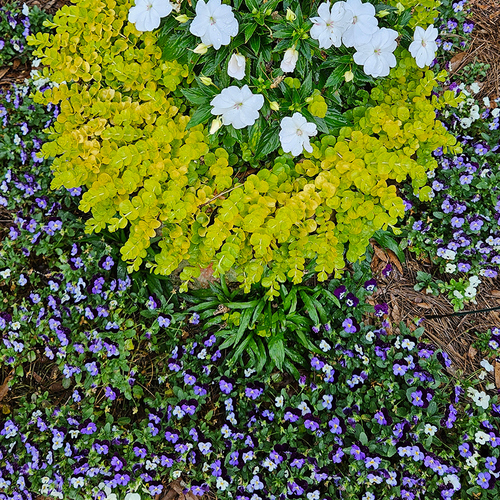
Happy Friday GPODers!
We’re back in Albany, Georgia today to see more of the spring color that has emerged from Julie Prince’s garden so far this year. If you missed yesterday’s post, check it out here: Part 1. Otherwise, enjoy the rest of Julie’s spectacular spring plants.
My garden has slowly unfolded. We enjoyed (???) a rare snow event in Southwest Georgia on January 22. In our yard we measured 6.5 inches accumulation, and it hung around for several days. I had no idea what would survive and what would suffer from the cold and wet conditions. I have been pleasantly surprised! The plants emerged pretty much as they would have otherwise, but it has been one thing at the time, thus the individual pictures.
Happy Gardening!
Julie Prince
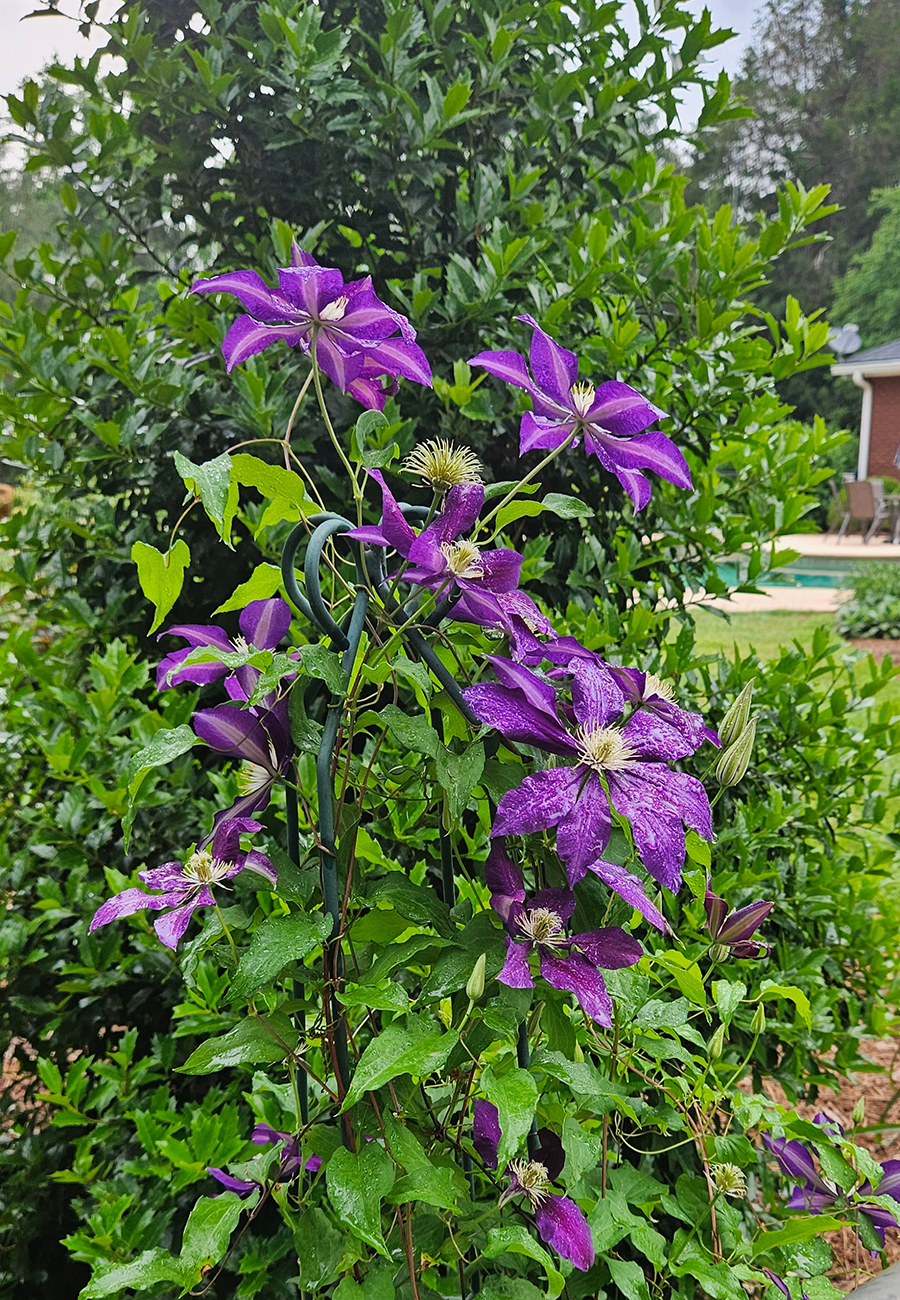 Clematis, amaryllis, Iceberg rose (Rosa ‘KORbin’, Zones 5–9) and red-hot poker (Kniphofia uvaria, Zones 5–9) showed off next.
Clematis, amaryllis, Iceberg rose (Rosa ‘KORbin’, Zones 5–9) and red-hot poker (Kniphofia uvaria, Zones 5–9) showed off next.
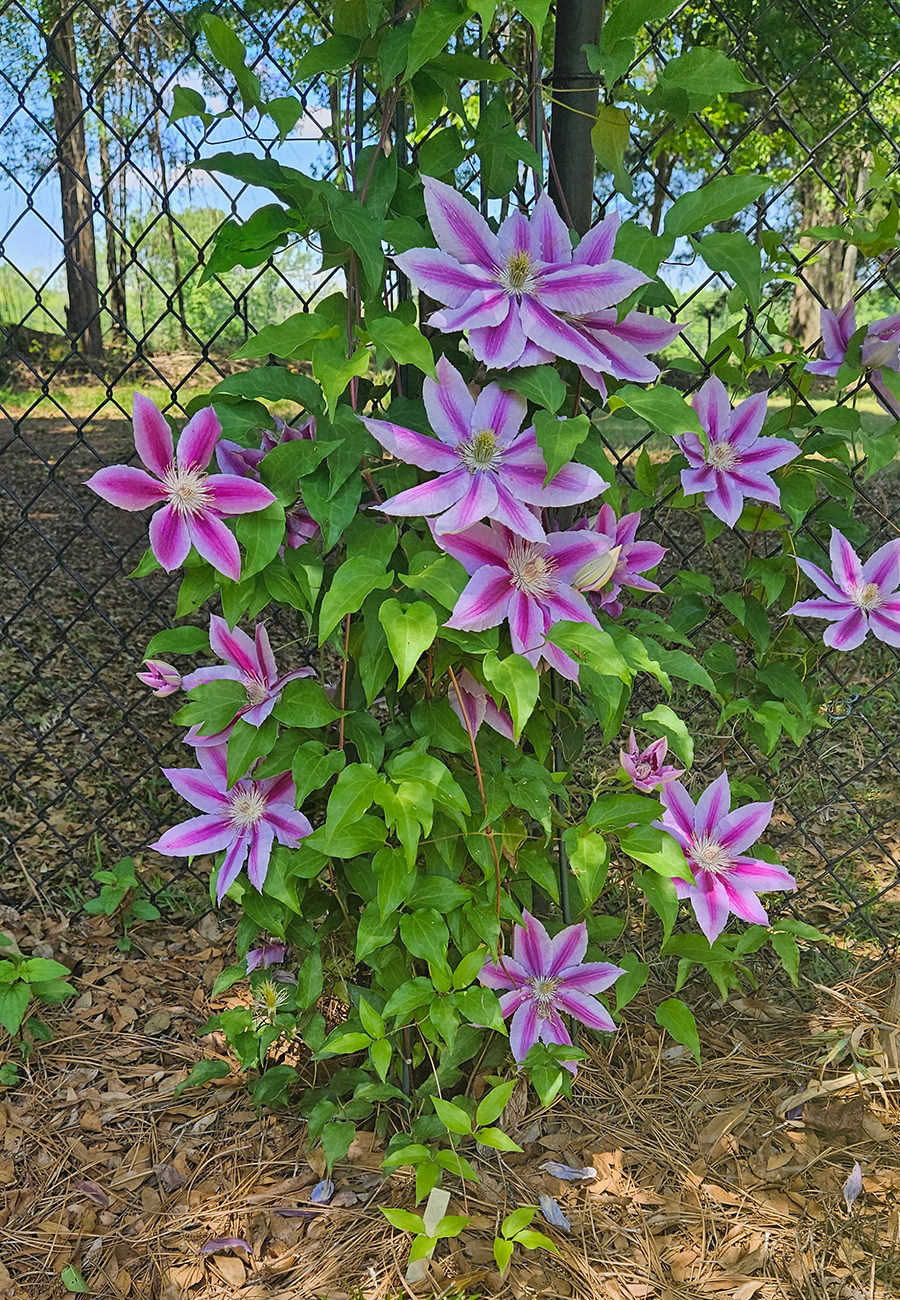 Along with the regal purple clematis Julie showcased above, she also has a beautifully striped Doctor Ruppel clematis (Clematis ‘Doctor Ruppel’, Zones 4–8) adorning her fence.
Along with the regal purple clematis Julie showcased above, she also has a beautifully striped Doctor Ruppel clematis (Clematis ‘Doctor Ruppel’, Zones 4–8) adorning her fence.
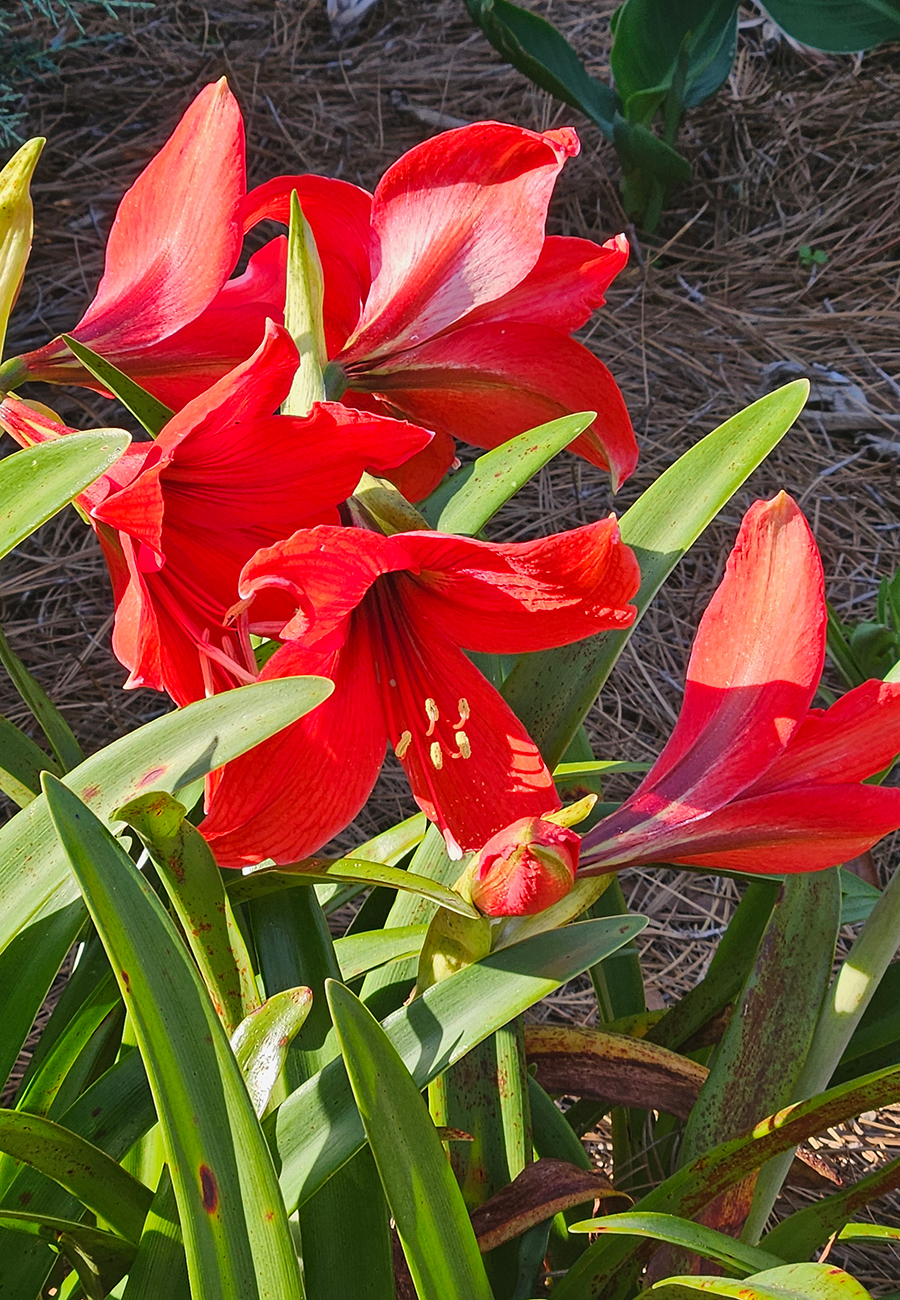 As a northern gardener, it’s always a treat to see amaryllis thriving in a southern garden rather than dipped in wax as part of a holiday display. This red cultivar is a bold pop in Julie’s spring garden.
As a northern gardener, it’s always a treat to see amaryllis thriving in a southern garden rather than dipped in wax as part of a holiday display. This red cultivar is a bold pop in Julie’s spring garden.
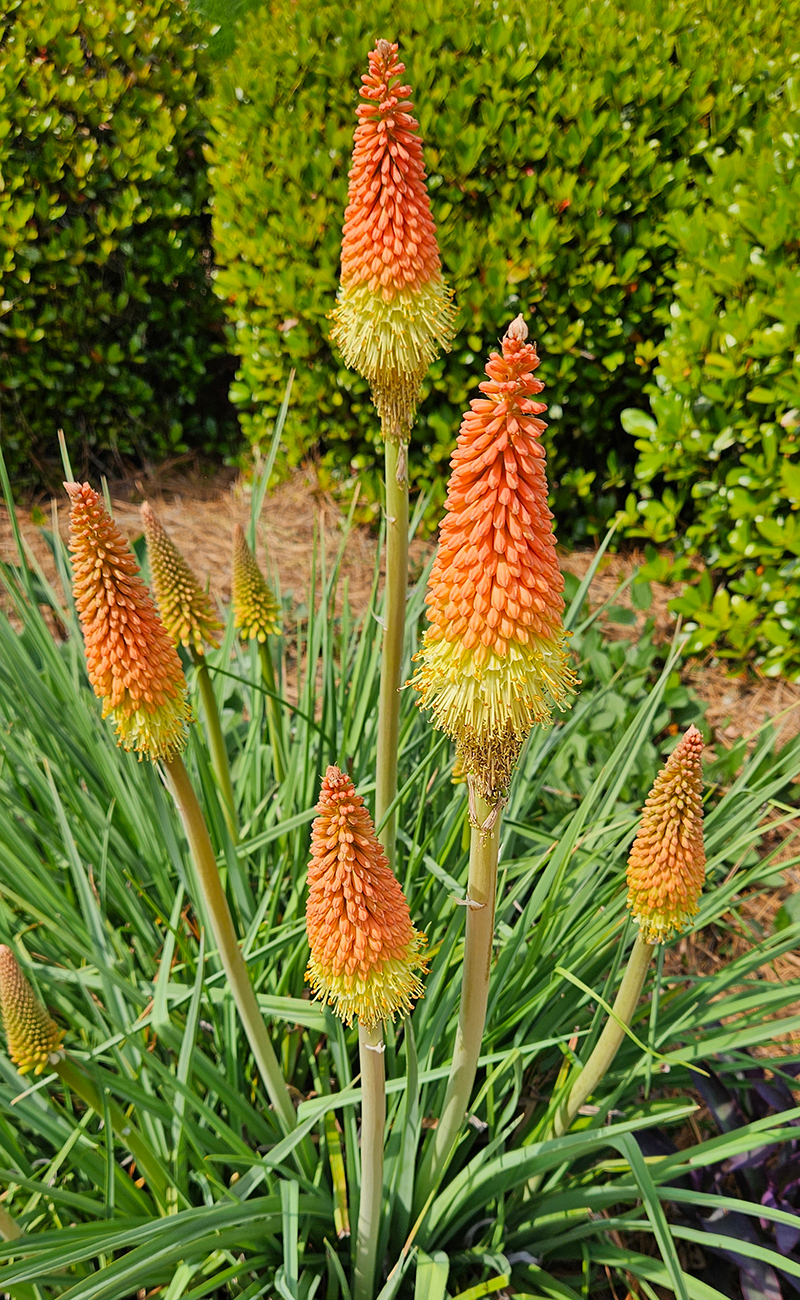 With their tall spikes of blooms, red-hot poker make for another bold pop of color in the early season.
With their tall spikes of blooms, red-hot poker make for another bold pop of color in the early season.
 A pink geranium (Pelargonium × hortorum, Zones 10–11) has burst into bloom after being carefully transported indoors and outdoors throughout the winter months.
A pink geranium (Pelargonium × hortorum, Zones 10–11) has burst into bloom after being carefully transported indoors and outdoors throughout the winter months.
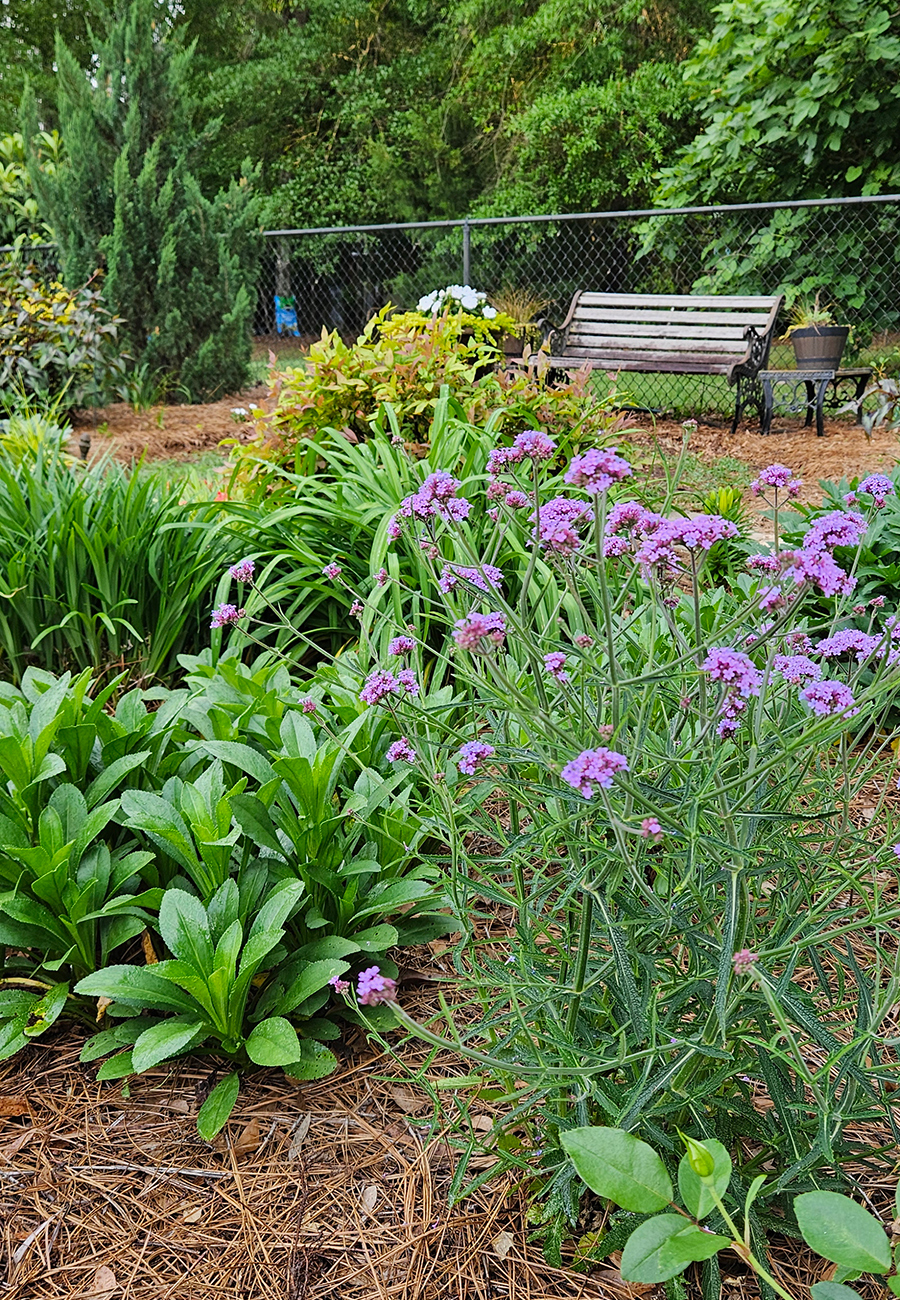 I have tried several times without success to grow the tall verbena (Verbena bonariensis, Zones 7–10). Much to my surprise, it not only survived the snow, but thrived!
I have tried several times without success to grow the tall verbena (Verbena bonariensis, Zones 7–10). Much to my surprise, it not only survived the snow, but thrived!
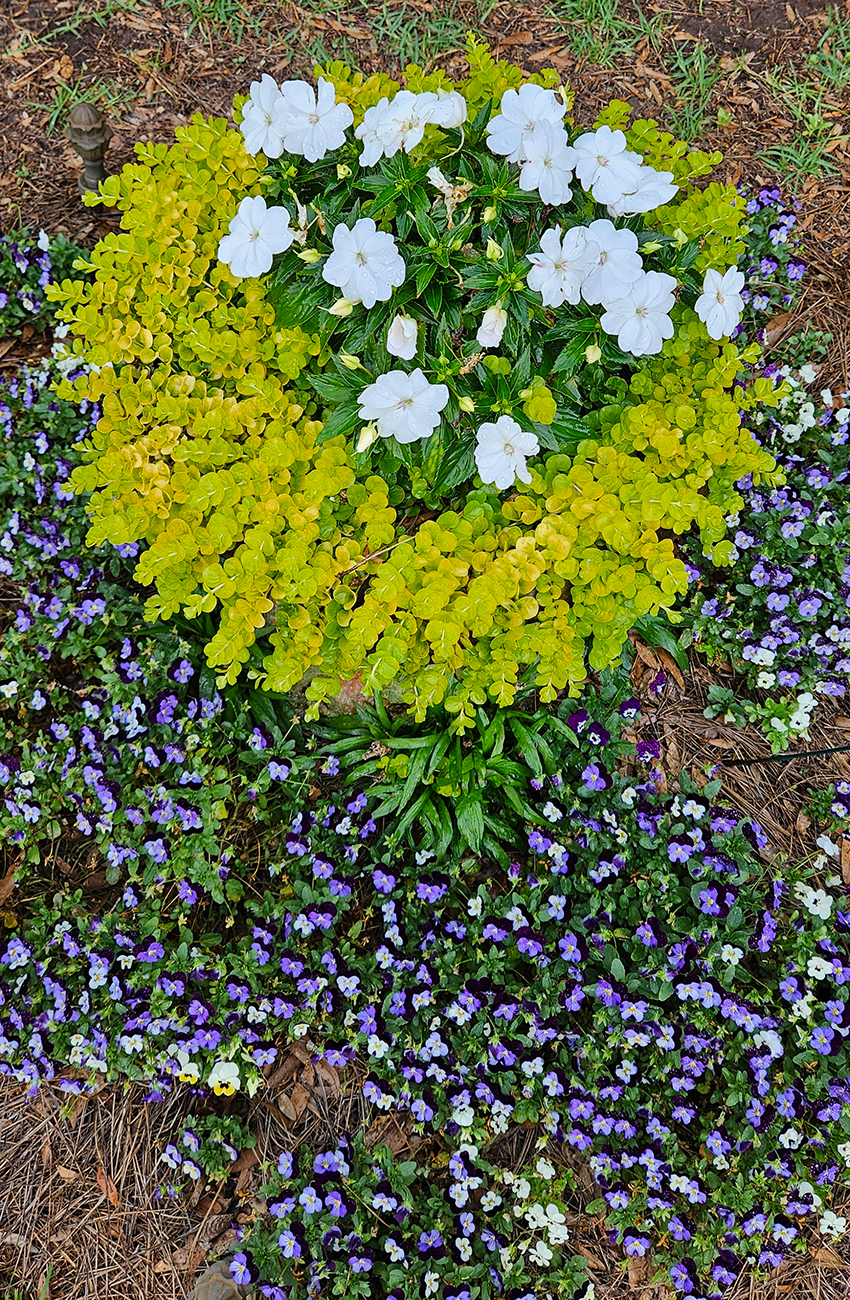 There is a view looking down on a pot planted with a white sunpatien (Impatiens x hybrida, annual) and creeping jenny (Lysimachia nummularia, Zones 4–8), surrounded by pansies.
There is a view looking down on a pot planted with a white sunpatien (Impatiens x hybrida, annual) and creeping jenny (Lysimachia nummularia, Zones 4–8), surrounded by pansies.
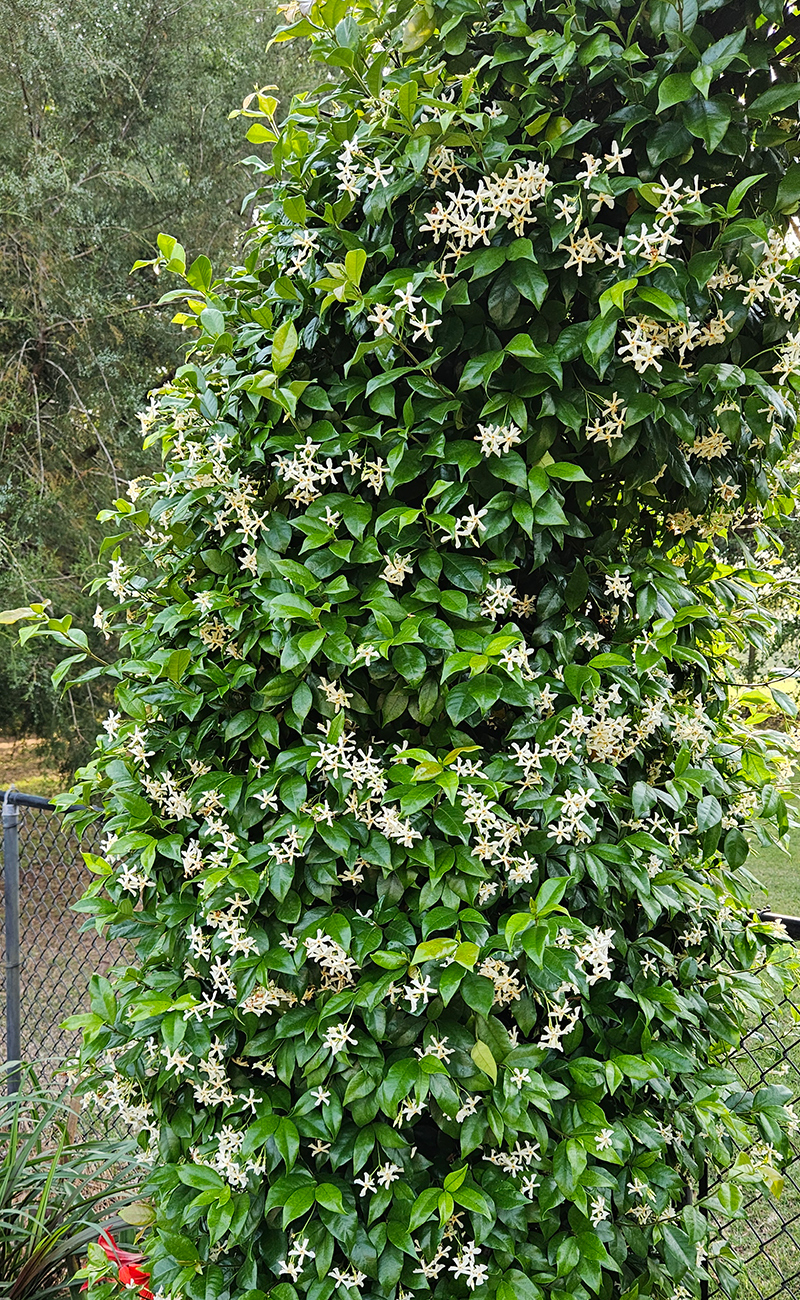 The star jasmine (Trachelospermum jasminoides, Zones 8–11) is still blooming and smells divine.
The star jasmine (Trachelospermum jasminoides, Zones 8–11) is still blooming and smells divine.
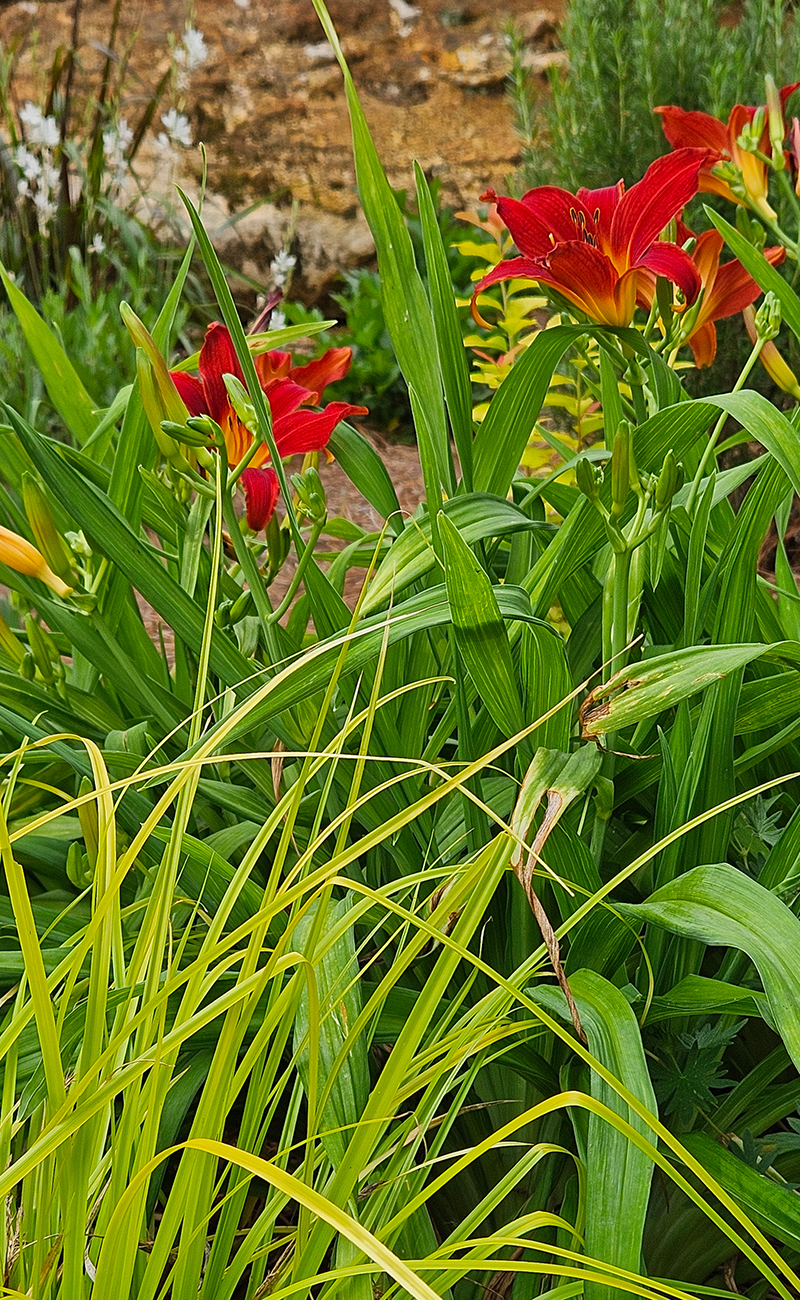 One clump of daylily is blooming very early. I hope it is a rebloomer!
One clump of daylily is blooming very early. I hope it is a rebloomer!
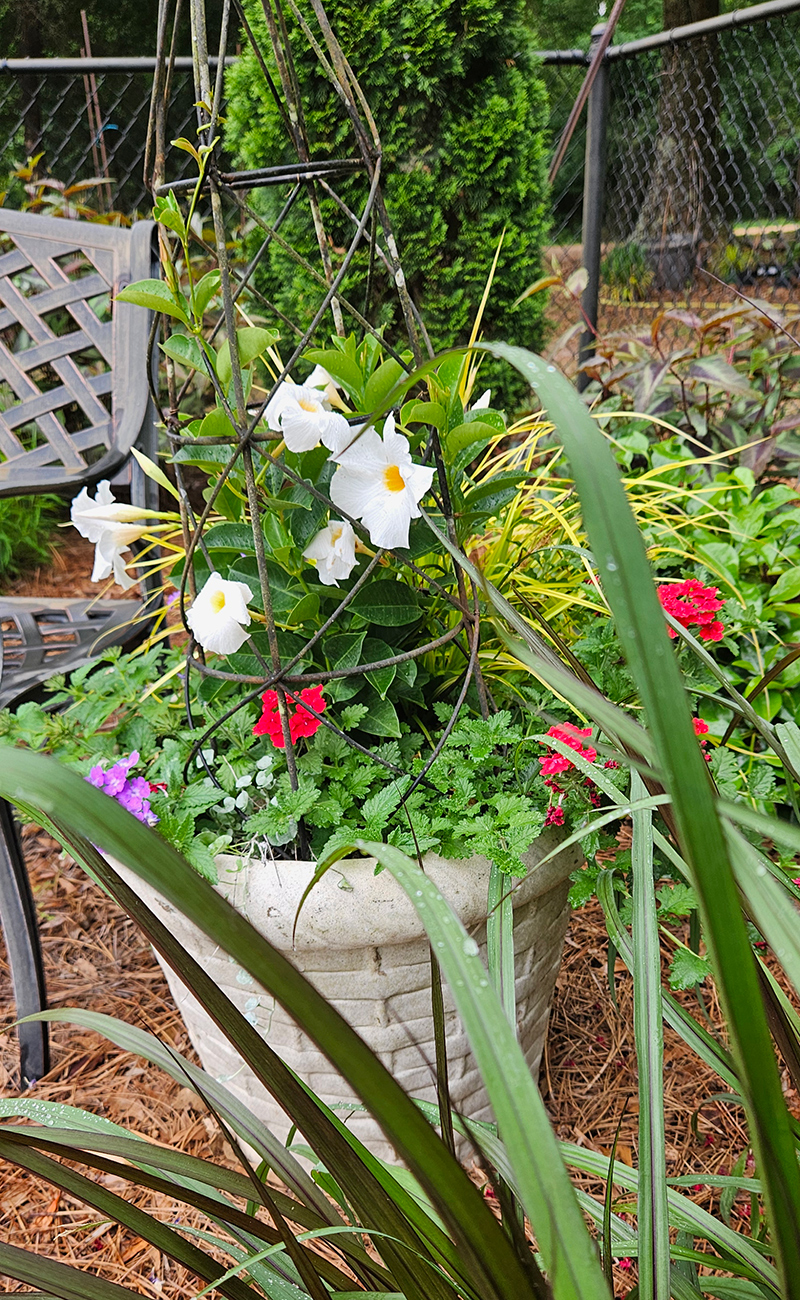 I don’t like seeing the chain link fence in the background, but it won’t be visible for long. The blue sky vine (Thunbergia grandiflora, Zones 8–11), moon vine (Ipomoea alba, Zones 10–12) and sweet autumn clematis (Clematis terniflora, Zones 5–11) are all growing like kudzoo!! It has started out to be a dry season. I am praying for a change for the flowers and for our farm!
I don’t like seeing the chain link fence in the background, but it won’t be visible for long. The blue sky vine (Thunbergia grandiflora, Zones 8–11), moon vine (Ipomoea alba, Zones 10–12) and sweet autumn clematis (Clematis terniflora, Zones 5–11) are all growing like kudzoo!! It has started out to be a dry season. I am praying for a change for the flowers and for our farm!
Thank you so much for sharing all of these incredible spring photos with us, Julie! Your garden has so many delights, and I’m thrilled to hear it is withstanding our unpredictable climate.
How did your garden withstand winter this year? Are your plants emerging strong despite inclement weather, or are you having to evolve and adapt as new weather or wildlife challenges come your way? While you’re out in your garden this weekend, consider taking some photos to share with Garden Photo of the Day. Follow the directions below to submit photos via email, or send me a DM on Instagram: @agirlherdogandtheroad.
We want to see YOUR garden!
Have photos to share? We’d love to see your garden, a particular collection of plants you love, or a wonderful garden you had the chance to visit!
To submit, send 5–10 photos to [email protected] along with some information about the plants in the pictures and where you took the photos. We’d love to hear where you are located, how long you’ve been gardening, successes you are proud of, failures you learned from, hopes for the future, favorite plants, or funny stories from your garden.
Have a mobile phone? Tag your photos on Facebook, Instagram or Twitter with #FineGardening!
Do you receive the GPOD by email yet? Sign up here
Fine Gardening Recommended Products
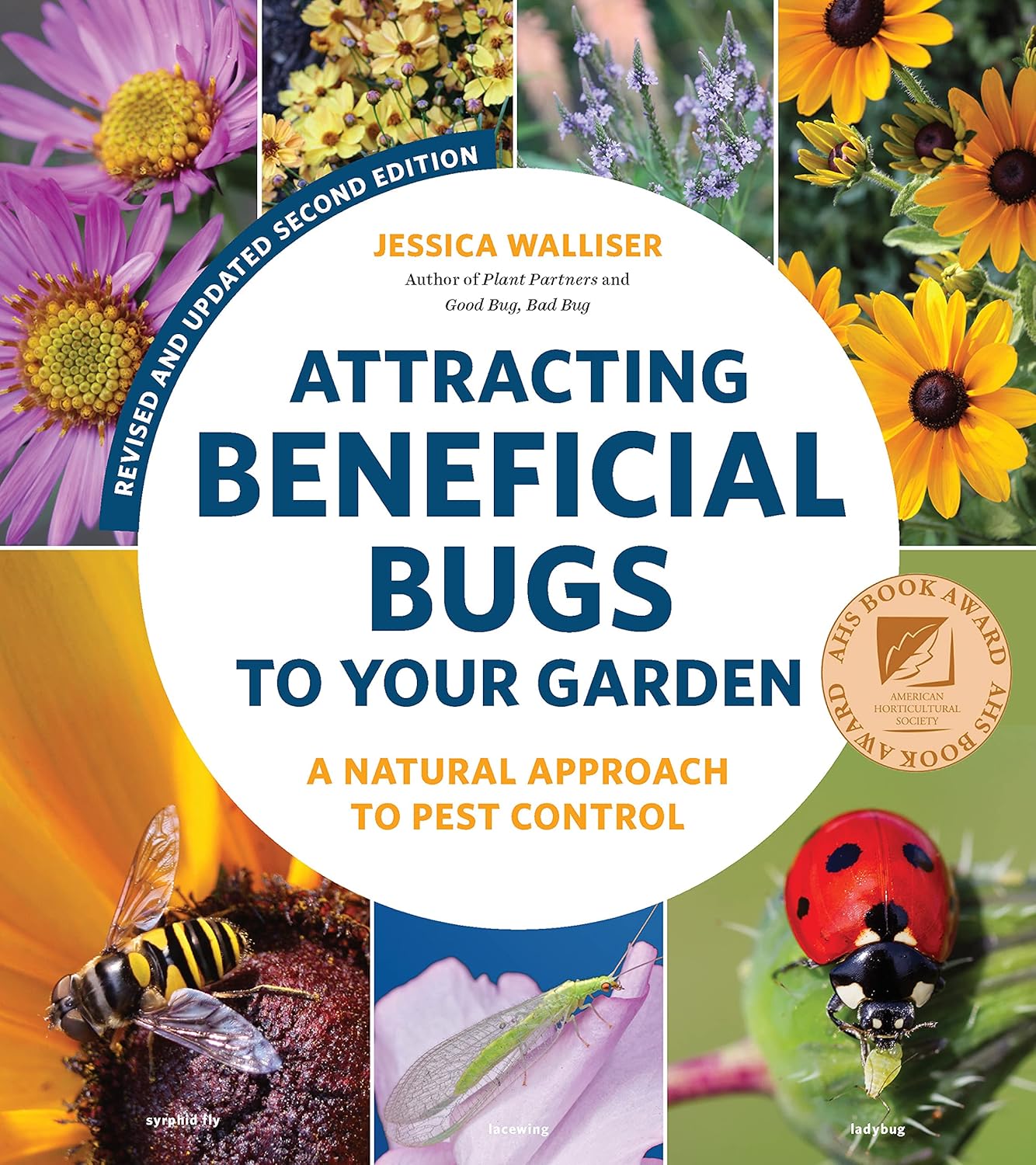
Attracting Beneficial Bugs to Your Garden, Revised and Updated Second Edition: A Natural Approach to Pest Control
Fine Gardening receives a commission for items purchased through links on this site, including Amazon Associates and other affiliate advertising programs.
This revised and updated edition of Jessica Walliser’s award-winning Attracting Beneficial Bugs to Your Garden offers a valuable and science-backed plan for bringing balance back to the garden. With this indispensable gardening reference—now updated with new research, insights, and voices—learn how to create a healthy, balanced, and diverse garden capable of supporting a hard-working crew of beneficial pest-eating insects and eliminate the need for synthetic chemical pesticides.

ARS Telescoping Long Reach Pruner
Fine Gardening receives a commission for items purchased through links on this site, including Amazon Associates and other affiliate advertising programs.
Telescopes from 4 to 7′. Cut and Hold (160) Blades. Drop forged blades for unsurpassed long lasting sharpness. Lightweight, 2.3 lbs., for continued use. Perfectly balanced for easy pruning.
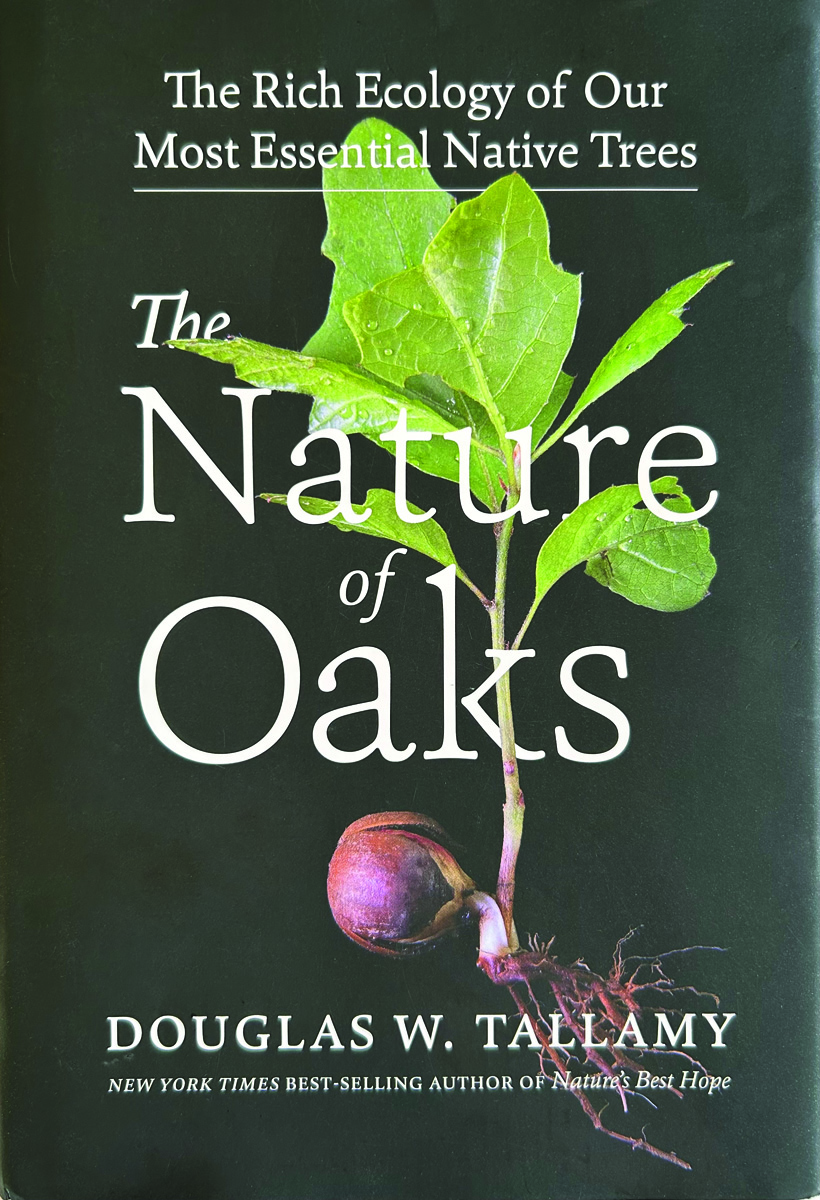
The Nature of Oaks: The Rich Ecology of Our Most Essential Native Trees
Fine Gardening receives a commission for items purchased through links on this site, including Amazon Associates and other affiliate advertising programs.
The Nature of Oaks reveals what is going on in oak trees month by month, highlighting the seasonal cycles of life, death, and renewal. From woodpeckers who collect and store hundreds of acorns for sustenance to the beauty of jewel caterpillars, Doug Tallamy illuminates and celebrates the wonders that occur right in our own backyards. He also shares practical advice about how to plant and care for an oak, along with information about the best oak species for your area.








